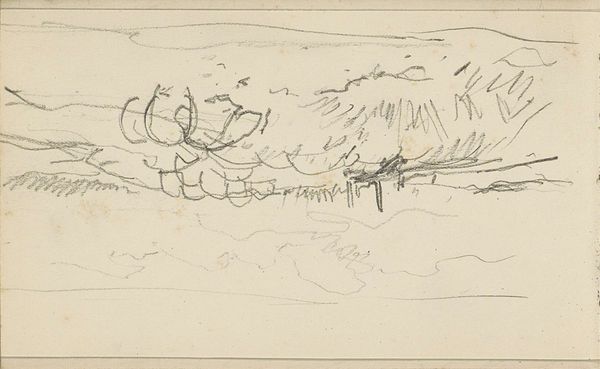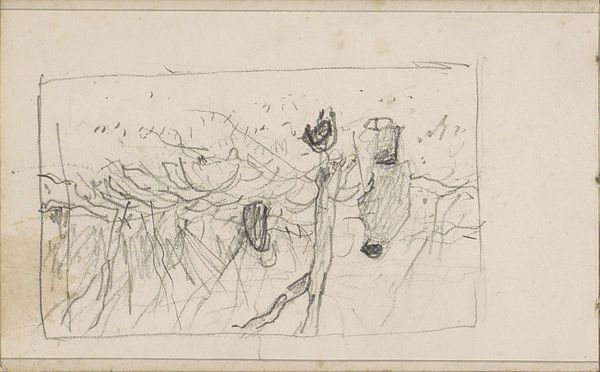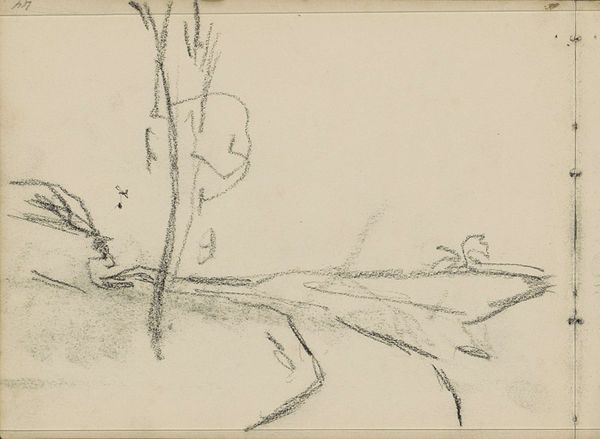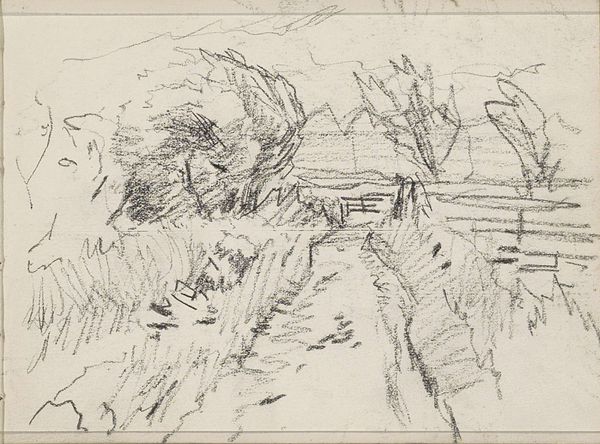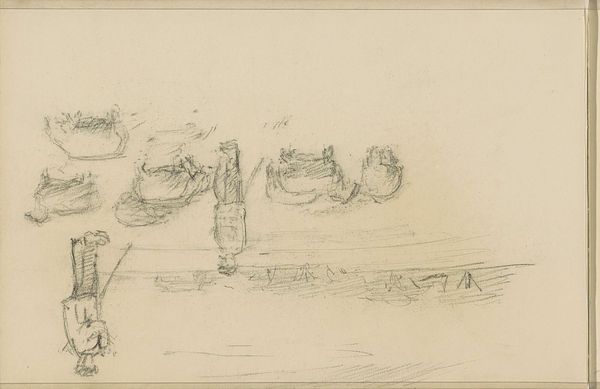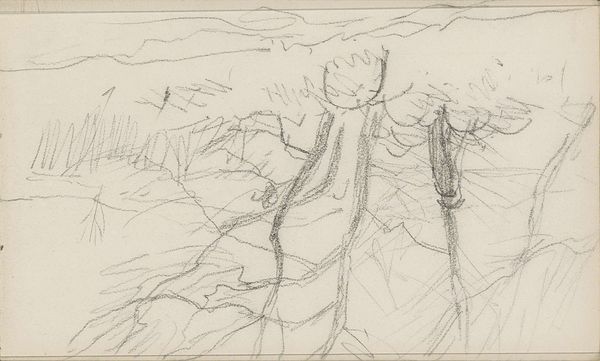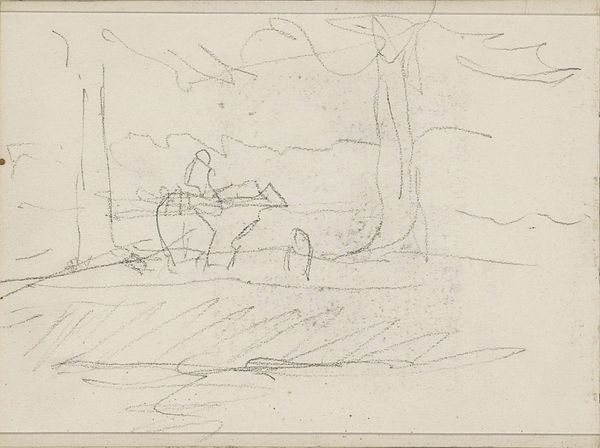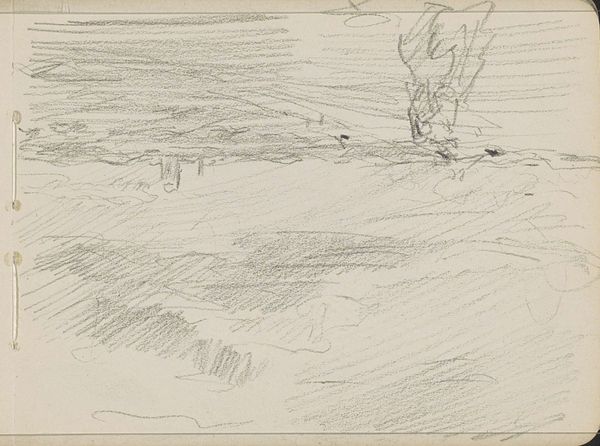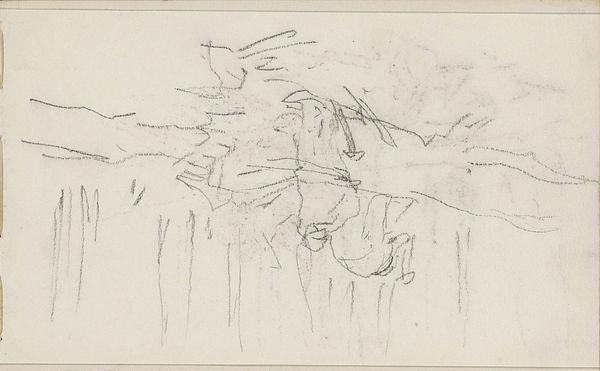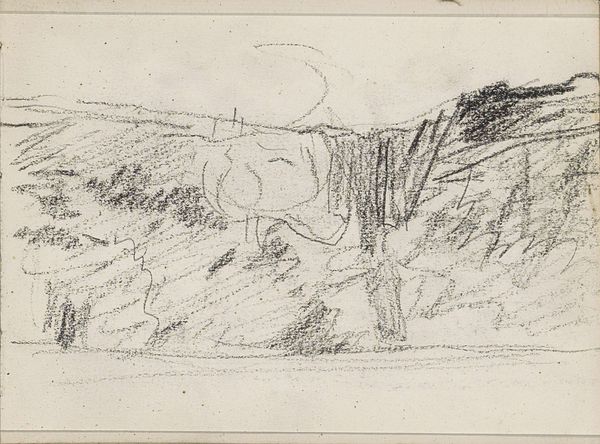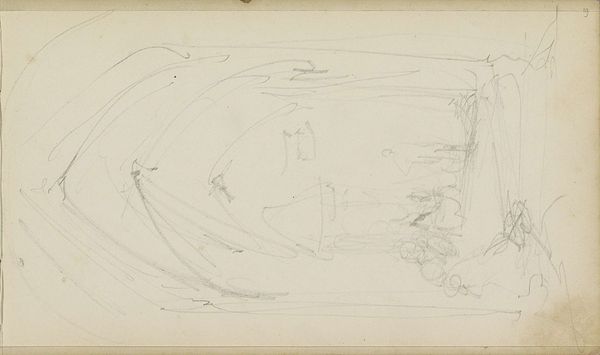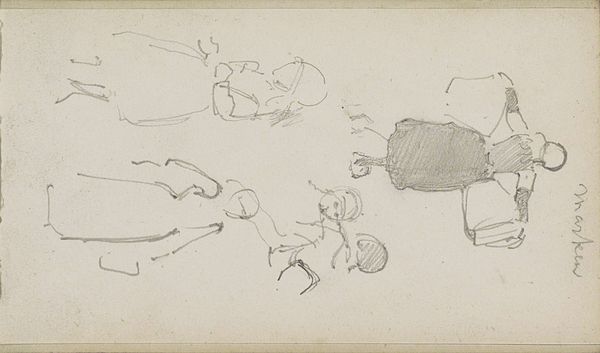
drawing, pencil
#
drawing
#
dutch-golden-age
#
impressionism
#
pen sketch
#
landscape
#
form
#
pencil
#
line
#
realism
Copyright: Rijks Museum: Open Domain
Curator: Here we have Anton Mauve's "Herder met een schaapskudde in een landschap," roughly translated as "Shepherd with a Flock of Sheep in a Landscape," created sometime between 1876 and 1888. It's currently housed here at the Rijksmuseum. Editor: It has such an airy, fleeting quality. The thin pencil lines give the impression of a landscape caught in a moment, the sheep almost like blurs of white moving across the field. It feels immediate. Curator: Exactly! And within that immediacy lies a deep connection to the social realities of rural life. Mauve was part of the Hague School, a group of Dutch Realist painters who sought to depict the everyday experiences of ordinary people. He portrays the labor, the quietude, the interdependence of human and animal existence. Editor: The medium itself speaks to that too. It's a drawing, a sketch – suggesting something unpretentious, accessible. Unlike a grand oil painting, it feels more directly connected to the artist’s hand and eye. The use of pencil on paper lends itself to capturing the fleeting nature of the subject; he can move quickly and directly, as needed. Curator: Right, and we shouldn't overlook how Mauve positions his figures in relation to the landscape. There’s a deliberate emphasis on the vastness of the natural world, suggesting a kind of symbiotic, but sometimes fragile relationship between the people who work that land, and the animals they care for. Think about how these quiet rural scenes stand in opposition to the growth of urbanized centers that took hold in this period. Editor: It's interesting how this 'simplicity' is deceptive. Mauve's apparent realism, focusing on what is available in the environment, draws attention to both labor and resources, suggesting ways to consider consumption by representing the shepherd and his flock together within the composition. There's real art involved in such a sketch, which transcends this simplistic view, by drawing into this vision considerations of both subject and its making. Curator: Indeed, it invites us to contemplate not just the picturesque beauty, but also the historical circumstances, economic implications, and cultural values inherent in this kind of representation, this relationship between art, labour, and identity. Editor: Thinking about the process really alters my perception. Thanks for prompting this kind of thinking about labor and skill. Curator: It's the layers that reward a longer look.
Comments
No comments
Be the first to comment and join the conversation on the ultimate creative platform.
